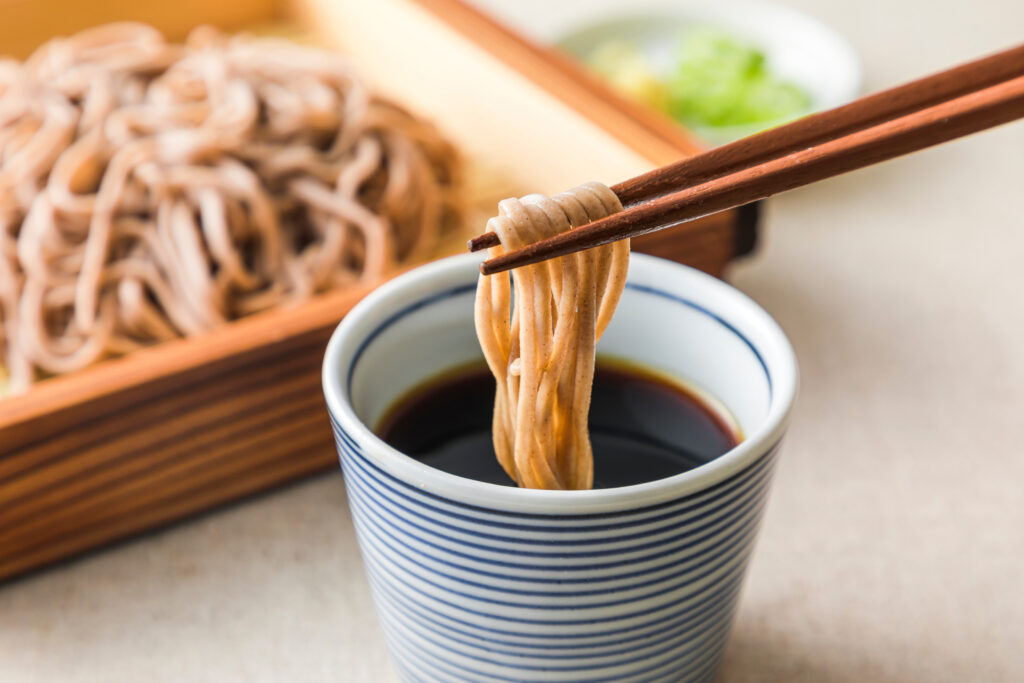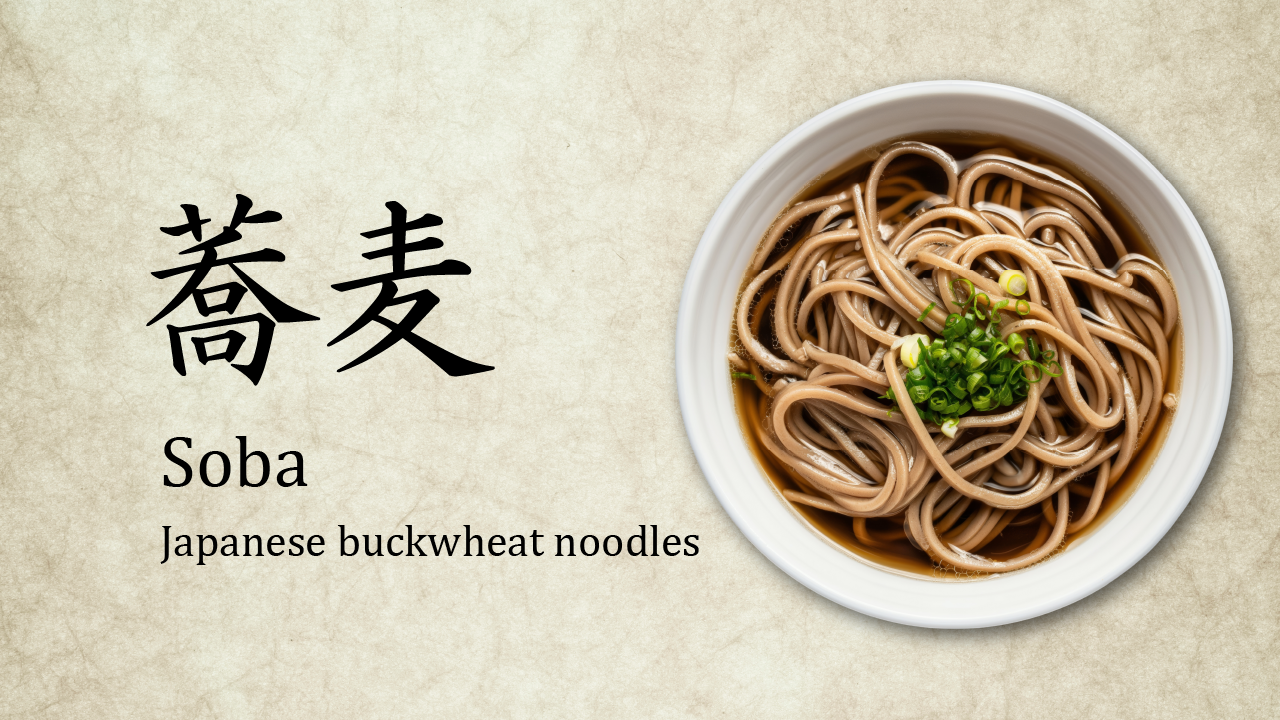When I was a child, my grandmother used to take me to a soba restaurant where part of the kitchen was enclosed in glass. From there, we could watch the chefs at work—kneading the dough, and slicing the noodles rhythmically with large knives. Each motion was mesmerizing, and I believe that’s why soba still holds a special place in my heart.
Hot Soba: The Quick Meal for Busy Times
Soba, or Japanese buckwheat noodles, is a dish enjoyed across Japan. In the past, soba shops could often be found right inside train stations, where people would eat quickly while standing at the counter. This is somewhat similar to the Italian bar style, but more utilitarian—designed not for socializing, but for efficiency. Today, with the rise of convenience stores and fast food options, these stand-up soba stalls have become less common.
Still, hot soba remains a perfect meal when you’re short on time. Just boil the noodles, pour over some hot broth, add a few toppings—and it’s ready! You eat the noodles and sip the soup in turn. Ideally, you finish the soup just as the noodles are gone.
Zaru Soba: The Gourmet’s Choice
For gourmets and soba enthusiasts, cold soba—specifically zaru soba—is the preferred style. After boiling, the noodles are chilled in water, then neatly arranged on a bamboo mat (zaru) and served with a dipping sauce called tsuyu in a separate cup.
Compared to hot soba, cold soba allows you to appreciate the texture and aroma of the noodles more directly. Enthusiasts often dip only the tips of the noodles into the tsuyu to fully savor the flavor of the soba itself.
Toppings, such as chopped scallions, sesame seeds, myoga (Japanese ginger), or grated ginger, are served on a small side dish. You can mix them into the tsuyu at any time—there’s no fixed rule. Personally, I start with just the noodles and sauce, and then gradually add toppings to adjust the flavor as I go.
What about you? Which topping would you enjoy most?

Soba Choko: The Perfect Little Cup
The small cup used to hold the dipping sauce for cold soba is called a soba choko. I love these little cups and own a few myself. They’re easy to hold, stable and hard to tip over, and versatile—you can use them for tea, or even as small bowls for side dishes.
If you’re interested in Japanese ceramics, soba choko are a wonderful entry point. Exploring pottery shops in Japan to find the perfect one makes for a memorable experience—and a practical souvenir.
Juuwari Soba: 100% Buckwheat Noodles
Most soba noodles are made with a blend of buckwheat and wheat flour—commonly in an 80:20 ratio, known as nihachi soba. But some restaurants make soba using only buckwheat flour, known as juuwari soba, meaning “100% soba.”
This type of soba is considered healthier, as it contains no wheat, but it can have a grainier texture and a slightly powdery mouthfeel. It’s a matter of taste and preference.
Is Juuwari Soba Safe for a Gluten-Free Diet?
Even if juuwari soba is made from 100% buckwheat flour, wheat flour may still be used on the surface to prevent sticking, and cross-contamination can occur if the kitchen also prepares wheat-based soba or tempura. For those with gluten intolerance or celiac disease, it’s essential to ask the restaurant about their preparation methods.
Also, be cautious with the tsuyu dipping sauce—most soy sauce contains a small amount of wheat.
If you’re highly sensitive, you might want to ask whether it’s possible to enjoy the soba with just salt instead.
Is Soba Vegan-Friendly?
Soba noodles themselves are typically made with buckwheat flour, wheat flour, and water. However, some shops use dashi (Japanese soup stock) made from bonito flakes or kombu (kelp) when mixing the dough.
More importantly, both hot soba broth and cold dipping sauce usually contain katsuobushi (bonito-based dashi).
If you’re a strict vegan, it’s best to ask whether the soba and dipping sauce are made without any animal-based ingredients.
✧ Final Thoughts
Soba is more than just a noodle dish—it’s a part of Japan’s culinary heritage, filled with craftsmanship, tradition, and personal memories. Whether you eat it quickly at a train station or savor it slowly with just the right toppings and ceramics, soba offers something for everyone.
